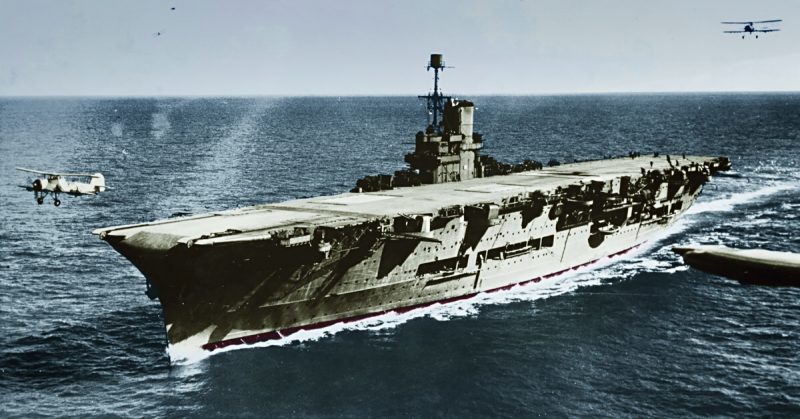HMS Ark Royal was built in Birkenhead, England from 1934 to 1938. It was designed to conform to the standards of the Washington Naval Treaty. It was the first ship to have the hangers and flight deck integrated into the hull design rather than as an add-on structure.
The Ark Royal was designed to carry a large number of aircraft and had two deck levels to this effect. It served in some of the most active naval theatres in World War II including operations off Norway, the search for Bismarck, and the Malta convoys.
The ship’s armament was designed with aircraft warfare in mind. It was fitted with eight twin anti-aircraft gun turrets equally positioned on either side of the hull. Submarines were considered a non-issue and could be overrun or dealt with by escorts.
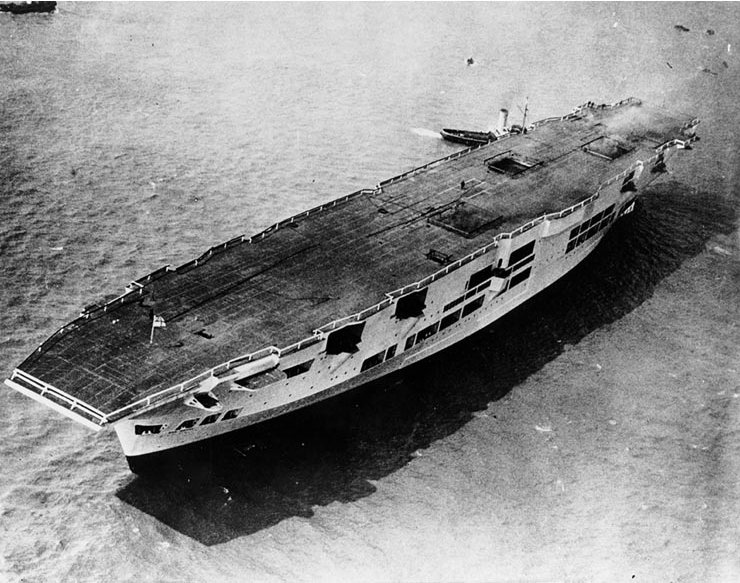
The Ark Royal began its service ferrying Fairey Swordfishes for reconnaissance and torpedo bombing, as well as Blackburn Skuas which were used as fighters and dive bombers. From April 1940, the Skuas were upgraded to Fairey Fulmars which were used as fighters and bombers.
At other times, the Ark Royal carried Blackburn Roc fighter-bombers and Fairey Albacore torpedo bombers, which were used as replacement aircraft to boost squadron numbers.
The vessel’s first assignment was a hunting mission to search for and destroy German U-boats. Specifically, it was to search for the U-30 which had torpedoed and sunk a passenger ship, the SS Athenia, during the first week of WWII. The Ark Royal conducted this mission with two other aircraft carriers, the Courageous and the Hermes. Each of them was surrounded by a group of smaller escort ships.
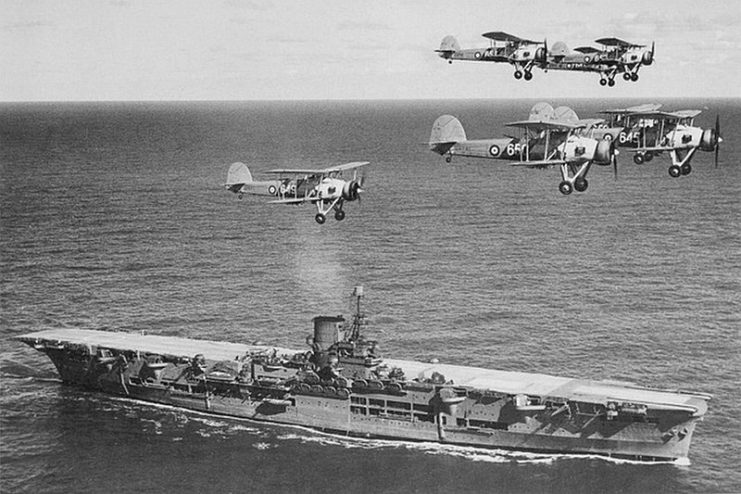
The Ark Royal received a distress call from a merchant ship, the SS Fanad Head, on 14 September 1939. The merchant vessel was 230 miles away and was being pursued by the recently re-surfaced U-30. The Ark Royal responded swiftly by sending aircraft to assist the merchant ship.
Unfortunately, the Ark Royal was spotted by the U-39 along the way. After a near-miss torpedo explosion and several attack strikes from the Ark Royal, the U-39 submarine became the first ever German U-boat to be sunk in the history of the war. The U-30 was luckier and managed to escape.
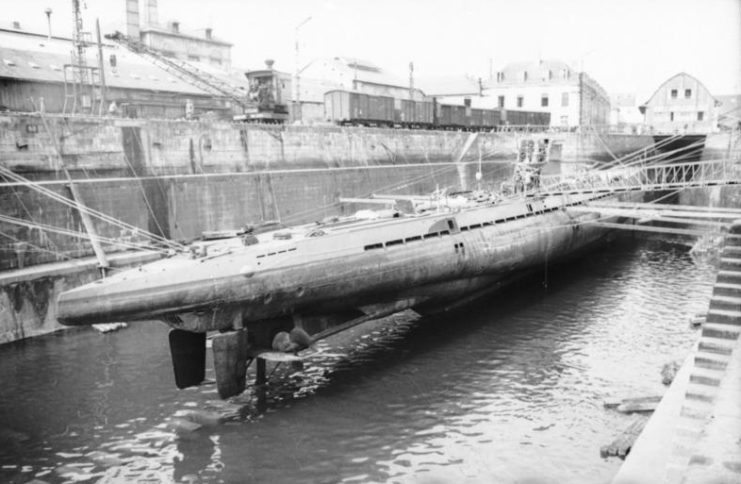
On 25 September 1939, the Ark Royal had helped rescue the Spearfish, a submarine which had been severely damaged by German warships off Horn Reefs in the Kattegat. The ship was returning to port with battleships the Rodney and the Nelson on 26 September when they encountered three German seaplanes. The Ark Royal launched three Blackburn Skuas and shot down one of the planes in the first aerial kill of the war.
Knowing that the remaining two seaplanes were a risk that would give away their position, the British aircraft were secured and the anti-aircraft guns were all set. As expected, four Junkers Ju 88 bombers soon appeared, three of which were driven off by the anti-aircraft fire.
However, the fourth succeeded in dropping a 2,200 lb. bomb towards the Ark Royal. The ship swerved hard and successfully avoided the bomb in another near-miss. The bomb landed 30 meters off starboard and exploded in the ocean, sending a huge wave over the deck of the ship.
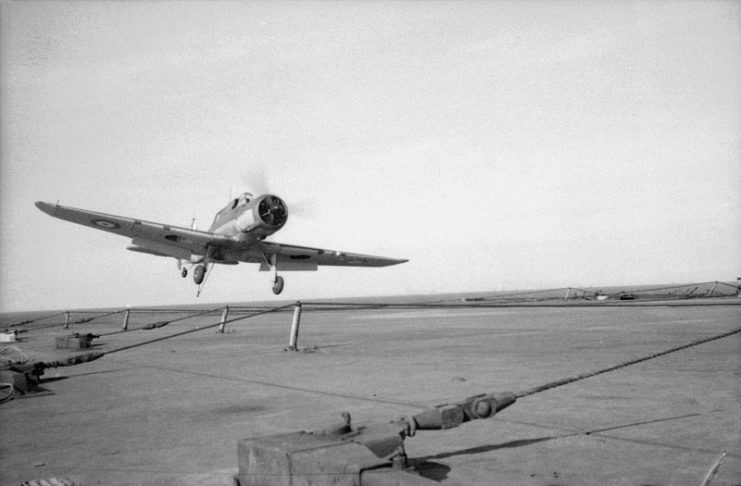
The Germans did not see the ship sink, but neither did they see the ship on the surface. After a bit of reconnaissance that located two battleships but not the Ark Royal, the planes took credit for sinking the mighty ship. This soon proved to be an embarrassment for the Germans as the Ark Royal was later discovered to be undamaged and still in service, following Winston Churchill’s official report to the United States President, Franklin Delano Roosevelt.
The Ark Royal was sent to Freetown to hunt down a German raider, the Admiral Graf Spee. The ship was part of Force K and sailed with a battlecruiser, the Renown, to the South Atlantic in October 1939. They encountered the German tanker Altmark which was there to supply the Graf Spee, but the tanker was heavily disguised as a US vessel, the Delmar.
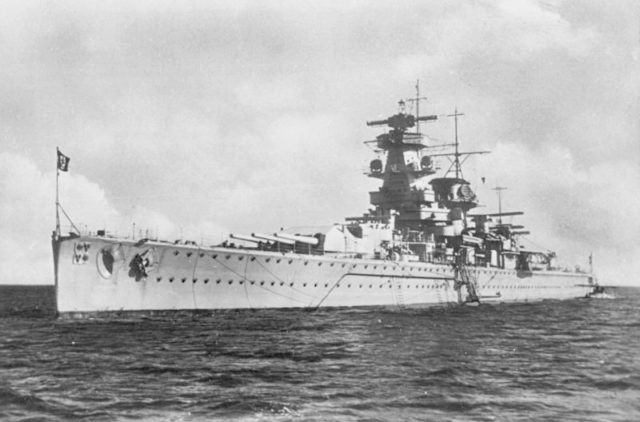
In a case of mistaken identity, the British let the ship through. However, in November, the British managed to capture the German merchant SS Uhenfels which was sailing to Germany. This prize was then converted into a cargo ship and renamed the Empire Ability.
Meanwhile, the Graf Spee had sustained heavy damage from the battle of the River Plate and was undergoing repairs in Montevideo. The ship was spotted and reported to Force K, but they were too far away at the time, so the British naval attaché placed an order to fuel Ark Royal at Buenos Aires about 140km west of Montevideo.
This information was deliberately leaked to the press to create the false impression that the Ark Royal had arrived already, knowing that the information would be passed along to the German embassy Montevideo.
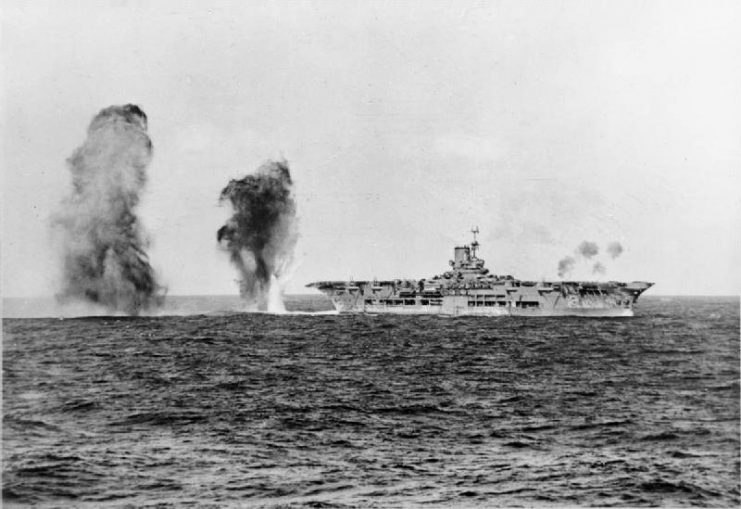
The ruse worked. Hans Langsdorff, captain of the Graf Spee, was alarmed upon receiving this false information because he knew his ship was in no shape to fight. He panicked and sunk his ship to avoid getting captured.
In April 1940, the Ark Royal and the Glorious, accompanied by several destroyers, were deployed as part of Operation DX to reclaim the coast of Norway which had come under the control of German Forces. After several attempts, it became clear that the operation was futile and so the mission objectives were changed to be the evacuation of Allied troops from Molde and Åndalsnes. The Ark Royal provided cover and warded off several air attempts by the Germans to sink the carrier.
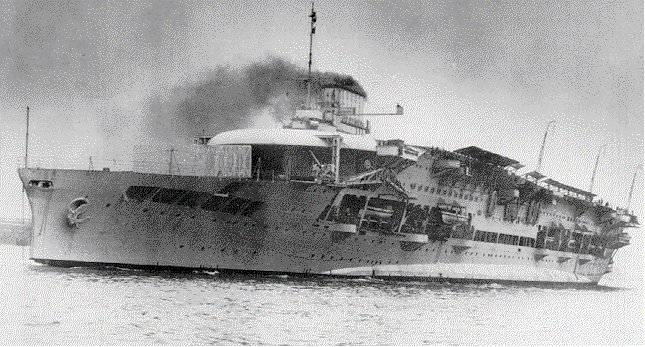
In Operation Alphabet, Allied troops were to be moved from Narvik to Britain. The Ark Royal and the Glorious covered the evacuation on 2 June 1940 with air patrols and bombing raids. Unfortunately, German battlecruisers, the Scharnhorst and the Gneisenau, attacked and sunk the Glorious, the Acasta, and the Ardent while they were on their way to Britain.
The Ark Royal’s aircraft failed to locate the German ships on the first attempt, but on 9 June 1940, the Scharnhorst was located at Trondheim during a raid. It was attacked at midnight on 13 June. This attack was a colossal failure, with eight of the fifteen Skuas getting shot down and the two escort destroyers, the Antelope and the Electra, colliding with each other.
In contrast, the Scharnhorst escaped without damage. The Ark Royal returned to Scapa Flow the next day and was reassigned to the Mediterranean fleet as part of Force H.
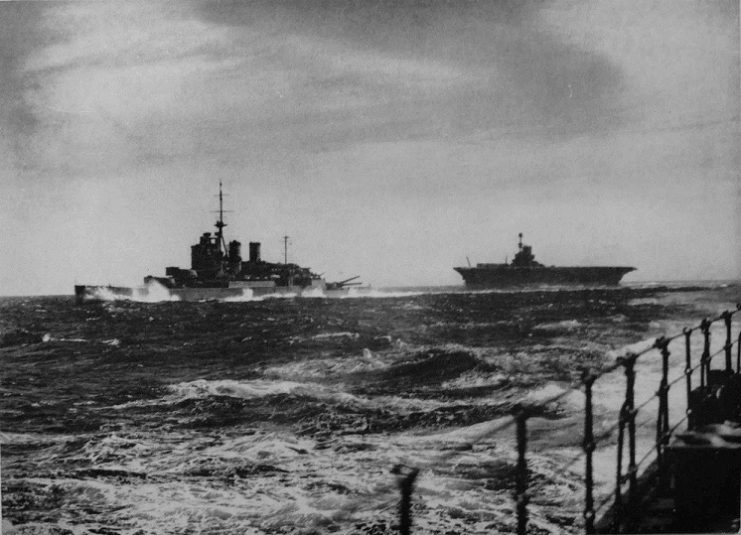
In May 1941, the Ark Royal, the Renown, and the Sheffield were deployed to the Atlantic in pursuit of the German battleship Bismarck. In Operation Rheinübung, the Bismark, alongside the heavy cruiser the Prinz Eugen, had sunk the battlecruiser Hood and damaged the battleship Prince of Wales during the battle of Denmark Strait.
After a series of mistaken identity incidents that heralded friendly torpedo blasts, the Bismarck was located and attacked with three torpedo hits that damaged her engine room and jammed her rudder, forcing her to sail towards the British warships with almost no maneuvering capability. Finally, the Bismarck sank on 27 May 1941.
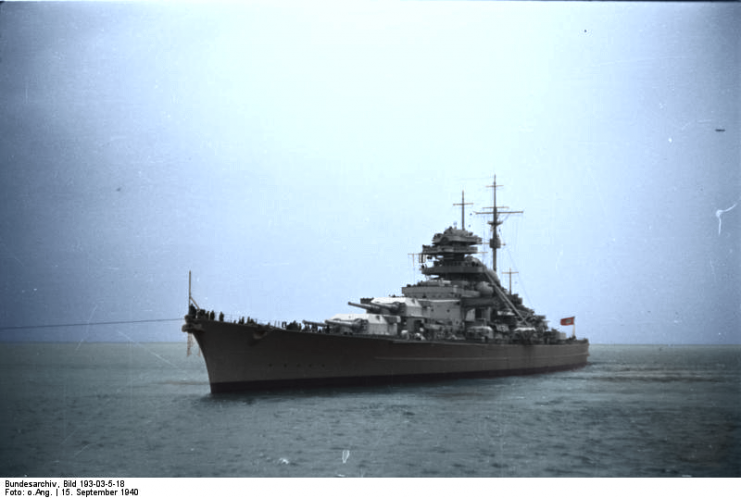
In one of several operations in November 1941, the Ark Royal was struck by a torpedo which created a large hole below the water line on the starboard side. Water immediately flooded in, destroying the power and communication systems. Captain Maund, who was determined to save his ship, ordered the engines to come to a complete stop.
Unfortunately, with the communication lines down, his orders did not take effect quickly enough, and the ship continued to move, widening the rift created by the torpedo explosion.
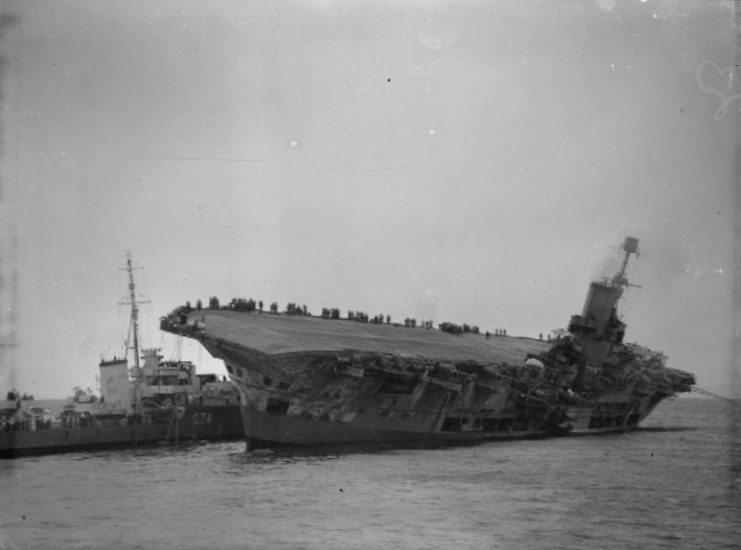
Read another story from us: HMS Churchill Sunk by U-Boats but the Bridgeplate is Preserved in Devon
Taking into consideration the severe damage the Ark Royal had sustained as well the heavy loss of life that had followed the sinking of other carriers such as Courageous and Glorious, Maund gave the order to abandon ship. The Legion helped to evacuate the crew members and 1,487 officers.
Only one life was lost that day, due to the direct impact of the torpedo explosion. As water flooded all the components of the ship, the Ark Royal eventually broke in two. The aft sank within a few minutes with the bow following soon afterward.
